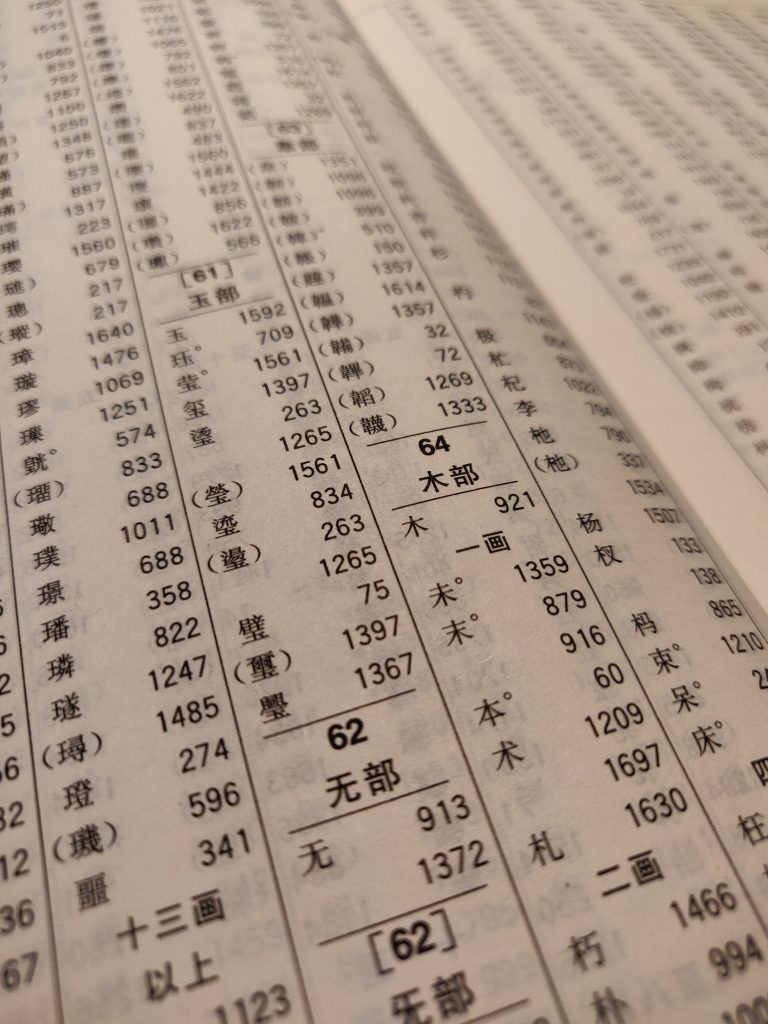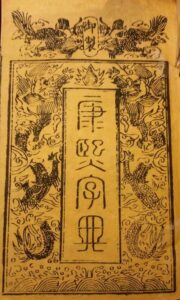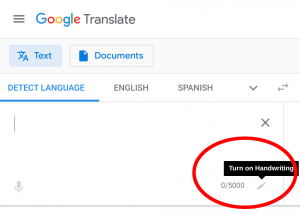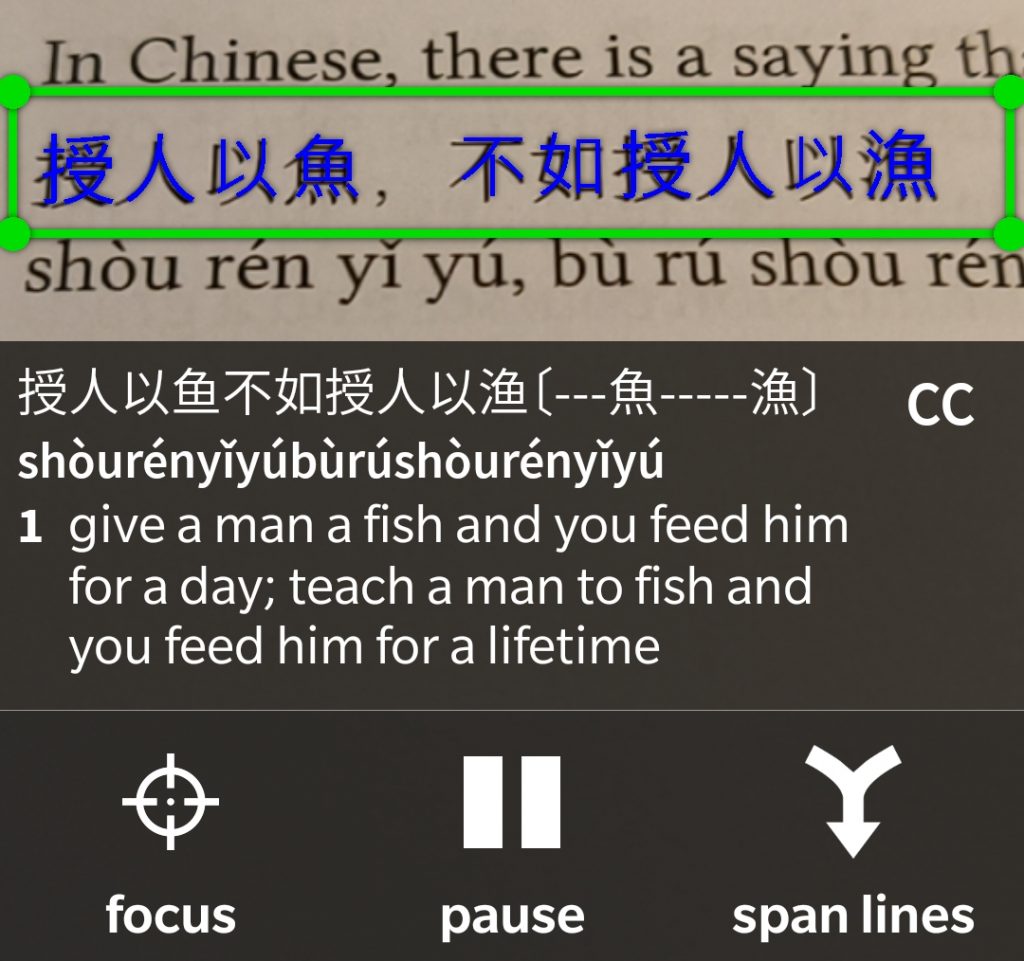 As soon as students realise that Chinese script is not an alphabet, and that there are thousands of characters they need to learn to become literate, one of the most common questions from beginners is how to look up Chinese characters you don’t know.
As soon as students realise that Chinese script is not an alphabet, and that there are thousands of characters they need to learn to become literate, one of the most common questions from beginners is how to look up Chinese characters you don’t know.
A related question common to hear both from beginners and from people who don’t study Chinese at all is how characters are typed on computer and phones, which I’ve explored in great detail in another article.
Chinese input methods: A guide for second language learners
These questions are related, because if you can get a digital representation of the unknown character, searching for the character online becomes trivial. In this article, I will focus on various ways of looking up Chinese characters, along with their pros and cons for students. Most people use a combination of theses, so my goal here is to give you toolbox you can rely on whenever you want to look up a Chinese character you don’t know.
Tune in to the Hacking Chinese Podcast to listen to the related episode:
Available on Apple Podcasts, Google Podcast, Overcast, Spotify and many other platforms!
If you’re looking for specific dictionaries, please check this article:
Why it’s tricky to sort Chinese characters in dictionaries
The need to compile dictionaries and look things up in them has of course existed since writing systems were invented. In languages with alphabets, this is not very complicated, because all you need to is list the words according to how they are spelt.
That doesn’t work as well for Chinese, however. Characters can be pronounced, of course, but what about characters that have multiple readings? And since the pronunciation often can’t be predicted from the written form of the character, how do you look up a Chinese character if you don’t know or have forgotten how it’s pronounced? These problems arise because Chinese characters are only partly about sound. If you want to read or listen to a thorough explanation of how this works, I suggest you check out this series about the building blocks of Chinese:
The building blocks of Chinese, part 1: Chinese characters and words in a nutshell
Modern paper dictionaries often contain look-up tables based on pronunciation, and many dictionaries are indeed sorted by pronunciation today, but that only helps you if you already know how the character is pronounced! Clearly, another way is needed. How did people look up characters without relying on pronunciation?
How to look up Chinese characters in paper dictionaries: The good old days
 This is where the term radical comes in (部首 in Chinese). By sorting characters according to their component parts, it’s possible to compile a dictionary that is not based on pronunciation and let’s you look up any character you want. Of course, each character is only sorted by one of its components, and this component is called the radical. Which component that is varies across time and space. For example, Shuōwénjiězì (說文解字) has a list of 540 radicals that are used to sort characters, but the more modern (18th century) Kangxi dictionary (康熙字典) has 214 radicals, which is the standard set still used today.
This is where the term radical comes in (部首 in Chinese). By sorting characters according to their component parts, it’s possible to compile a dictionary that is not based on pronunciation and let’s you look up any character you want. Of course, each character is only sorted by one of its components, and this component is called the radical. Which component that is varies across time and space. For example, Shuōwénjiězì (說文解字) has a list of 540 radicals that are used to sort characters, but the more modern (18th century) Kangxi dictionary (康熙字典) has 214 radicals, which is the standard set still used today.
To look up a character in a paper dictionary, you first identify the radical. This is sometimes easy (in compound characters, it’s usually the meaning component on the left), but sometimes impossible if you don’t know the answer in advance. You then count the number of strokes in excess of that radical and look for that place in the dictionary. Even though this is a digital version, you can still get the idea by checking the radical look-up method on MDBG here. Let’s say you don’t know what 样 means. You can (correctly) guess that the radical is 木.
- How many strokes does 木 have? Four, so skip to where those radicals are listed and look for 木. Once you’ve found it, follow the reference to the page where all characters with this radical are listed.
- How many strokes does 样 have apart from the radical? Six, so skip to that area and just look for the character you want. In some cases, there can be dozens of characters, but you should be able to find it. In a printed dictionary, you’d then be given a reference to the page where more information about this character can be found.
Why looking up Chinese characters used to be really hard
Easy, right? Well, only if you know Chinese already. If you do, it can take a few minutes if you’re not used to counting strokes and you have to flip through pages looking for what you’re after, but unless you’re looking up things all the time, it’s not so bad.
As an adult learner, however, that’s exactly what you need to do. And how are you supposed to know what the components are? And what if you don’t know stroke order and don’t know how to count strokes? And what if the radical isn’t the component on the left?
When I started learning Chinese, which was right before electronic and digital dictionaries became common, I spent more time trying to find the characters than I did reading. That was partly because I read texts that were too hard, instead of good texts suitable for beginners, but in a language like French or German, this wouldn’t be so bad.
The above case with 样 is also very easy.
There are many cases that are more or less impossible to figure out unless you know the answer in advance. For example, what’s the radical of 渴? How many strokes does it have? Well, the answer is 水 and it has four strokes. Good luck finding the character if you don’t know this!
Or another example: What’s the radical in 五? Or simplified 兰?What about 卤/鹵? Well, it’s 二 and 八 respectively, and 卤 is actually its own radical, which is far from obvious. These are just a few examples; there are weirder cases.
So, the good old days were actually horrible and much time was wasted on things that did nothing to improve one’s reading and writing ability. Fortunately, there are better solutions these days!
Enter: Electronic and digital dictionaries
Most of the above problems can be easily solved with digital technology, which means that learning to read and write Chinese today is much, much easier than it used to be. I don’t say that to diminish anyone’s accomplishments; learning to read and write Chinese with digital technology is still hard! If you want to read about the paperless revolution in Chinese reading from someone who started learning Chinese before I was born, I recommend this article by David Moser:
How to look up Chinese characters you don’t know on your phone or computer
So, how exactly can you use a computer or your phone to look up unfamiliar Chinese characters? Well, to start with, you can do the same as in paper dictionaries, only now by clicking instead of flipping pages (like I showed with MDBG above). This is an improvement, but not a major one since the main obstacles still remain.
There are more options, though:
 Handwriting on a touchscreen or with a mouse – This is more useful if you know a bit about Chinese characters, as simply drawing something that looks like the character you’re after is unlikely to work. This is because handwriting recognition is not based on just visual similarity, but also the number of strokes, the position of the strokes and so on. While recognition gets better and better, you usually have to use at least the right number of strokes and put them in roughly the right positions. This is still a huge improvement over look-up by radical, though. If you want to try handwriting input online, just head to Google Translate! Enable handwriting by clicking the pen icon in the bottom right corner. Most smartphones also have handwriting input as an option once you have enabled Chinese language support.
Handwriting on a touchscreen or with a mouse – This is more useful if you know a bit about Chinese characters, as simply drawing something that looks like the character you’re after is unlikely to work. This is because handwriting recognition is not based on just visual similarity, but also the number of strokes, the position of the strokes and so on. While recognition gets better and better, you usually have to use at least the right number of strokes and put them in roughly the right positions. This is still a huge improvement over look-up by radical, though. If you want to try handwriting input online, just head to Google Translate! Enable handwriting by clicking the pen icon in the bottom right corner. Most smartphones also have handwriting input as an option once you have enabled Chinese language support.- Optical character recognition (OCR) – Many apps and websites provide OCR features where you can scan or take pictures of the character(s) you want to look up. Google Docs has such a feature and there are others online you can easily find by searching for “Chinese” and “OCR”. Pleco offers a mobile OCR scanner as paid add-on (see screenshot below). As long as you’re dealing with printed characters, this method is almost guaranteed to succeed instantly, and you’re only limited by the procedure of scanning or taking photos.
- Pronunciation – If you have a hunch of how the character might be pronounced, you can type Pinyin (often without tones will work too) and browse through suggested characters. You can also use voice input or speech-to-text functions, but that’s really a topic for another article (or two, in fact; check out Using speech recognition to improve Chinese pronunciation).
- Contextual look-up – Should all of the above fail, you can still find many characters by relying on context. In some dictionaries, such as Pleco, you can search with wildcards. If you have an unknown character A followed by a known character B, you can search for @B, which will give you all words that start with A followed by B. You can then find the unknown character this way. If the search results are sorted by frequency, this can be very effective.
- Using English – If you know what a character means, but want to look it up for some other reason, such as to know it’s pronunciation or how it’s written by hand, sometimes searching in English can be quicker than using the other methods.
Once you’ve found the character in a digital dictionary, you can do whatever you want with it, including copying it and pasting it into any of the other resources I linked to above (21 essential dictionaries and corpora for learning Chinese).
If you follow Moser’s advice and spend at least some time reading digitally, looking characters up is obviously much less of a problem, as any pop-up dictionary or other tool designed for looking up characters in a digital text will give you instant information about any character you want, meaning that you can spend your time and energy learning Chinese instead of flipping through pages in a book.
Conclusion: How to look up Chinese characters you don’t know
Looking up Chinese characters has never been easier, but it’s still harder than looking up words in many other languages. Paper dictionaries require some knowledge of Chinese to use and waste a lot of time that doesn’t really contribute to your learning.
Digital dictionaries offer a range of look-up methods, and which one you use depends on what you know and what you want to know. Once you’ve mastered basic stroke order, handwriting input is probably the easiest option, but later when you know enough about the building blocks of Chinese, especially phonetic components, guessing the pronunciation is sometimes faster.
What method do you prefer? Have I missed some useful way for how to look up Chinese characters? Leave a comment below!

Tips and tricks for how to learn Chinese directly in your inbox
I've been learning and teaching Chinese for more than a decade. My goal is to help you find a way of learning that works for you. Sign up to my newsletter for a 7-day crash course in how to learn, as well as weekly ideas for how to improve your learning!

7 comments
Thanks for this article. I started learning Chinese in 1966, and Mathews was where I spent a lot of time. I am no longer in the field, but I have wondered how looking up characters has changed with computers. I will find the Mosher article and read it with great interest.
It really is very different these days, like qualitatively different. When I started learning, I think there were lots of tools available, they were just not easy enough to use and they were hard to find, so I still mostly relied on old-fashioned dictionary look-up, even if the dictionaries were digital (i.e. I had no handwriting or OCR or anything fancy like that). This was further compounded by the horrible design of the textbook we used, which presented example sentences for grammar that had tons of new vocabulary which were not introduced or explain anywhere in the book, not even Pinyin was given. It took me and a friend about an hour per chapter to just figure out what these example sentences meant!
I have just started reading the Dao je ding, Tao Te Ching by Stephen Mitchel and Paul Carus’s literal translation. It has helped me a great deal along with my regular lessons. Characters , pronunciation and meaning are intertwined. it takes time to figure out what crossed the speaker’s mind as they talk.Trainchinese dictionary helps a lot! Yet, I wish I had feedback from someone else. Thanks for inspiring and keep on running
Since more and more people are consuming content on their screens (rather than in the real world), it’s probably also worth mentioning the relatively new breed of smartphone apps that allow looking up characters in any app where copy-paste is not available. The first of which (for any language, in fact) was our very own Hanping Chinese Popup which gives the user a floating cursor on top of whichever app is currently shown – move the cursor to the Chinese text and a popup will be revealed showing the pronunciation, dictionary meaning etc, as well as buttons to play audio, star/tag, copy etc.
I would add another method of “Contextual look-up”. Let’s say I see 威慑 but I don’t know the second character. I have a Pinyin keyboard on my phone and if I type in wei, then I select 威 — the keyboard will auto-suggest characters that follow this character. Doesn’t always work, but the fastest method by far when it does.
That’s already covered under “contextual look-up”! 🙂 But yes, I agree that this is quite useful.
Thank you. I learned how to find Chinese characters.